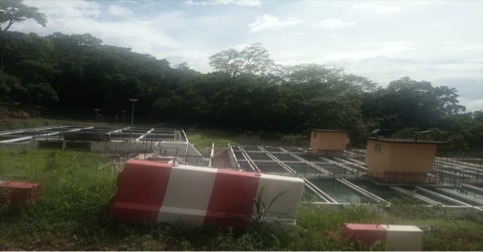Although Sierra Leone is located in the tropics and receives ample rainfall, water remains one of the greatest issues millions face in the country’s capital, Freetown.
The latest measurement of annual rainfall stands at 2945.3mm, a rare figure for other countries in Africa and other parts of the world.
Rainfall is abundant between May and October, but authorities have struggled to capitalise on the natural resource.
The only water reservoir in the city is the Guma Dam. Daily, Freetown residents struggle to fill their bowls and jerry cans, and scenes of quarrels and even fistfights are not unusual.

Most times, residents turn to boreholes as their primary source of water. A resident of Allen Town community in Freetown, Musa Kamara, says the borehole is his only water source for drinking, cooking and laundering.
But, it does not go without a struggle.
“It is difficult to get water in the dry season, and the boreholes get dried up and we take turns to get water. Sometimes, we wait for a day or more,” he explained.
As a result of deforestation, Freetown, the country’s capital, is facing a severe water crisis. As the population of Freetown continues to grow exponentially, the city’s water catchments are being damaged.
Statistics Sierra Leone estimates Freetown’s population to be over 2,000,000 (Two Million), which significantly exceeds the city’s population of 400,000 (Four Hundred Thousand) in 1980.
Even the forests of the main Guma Dam in Freetown are not spared. Squatters have taken a significant part of the forest, a major cause of water shortage in the dam.
The dam and the water treatment plants have gone dry; suffice it to say Freetown will not get enough water till the rains start in May this year. It is a recurrent phenomenon.
Achieving clean water and sanitation is one of the ambitious Sustainable Development Goals for 2030.
The Government has pledged to eliminate the problem of access to clean water by the same year.
With seven years to go, signs of overcoming such challenges
